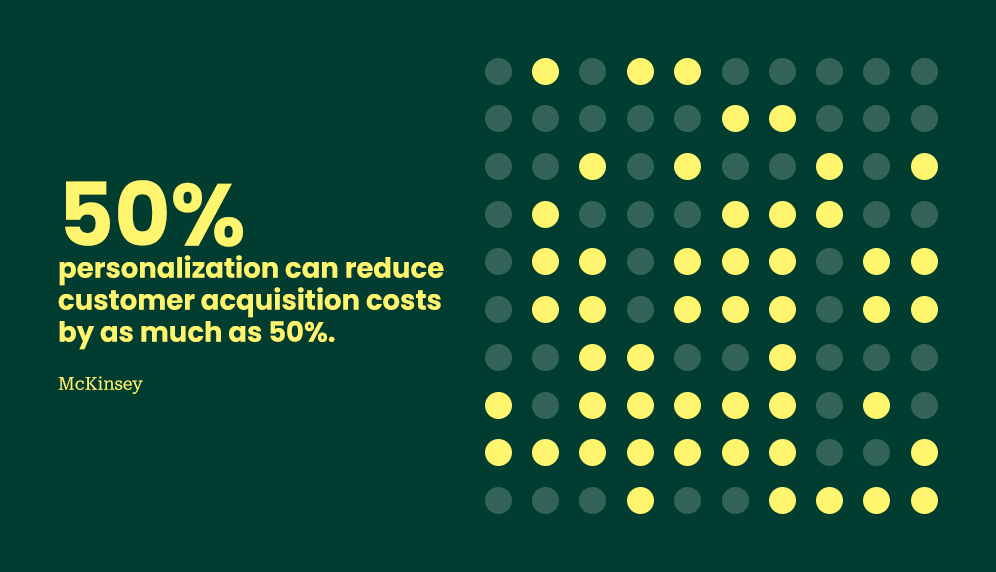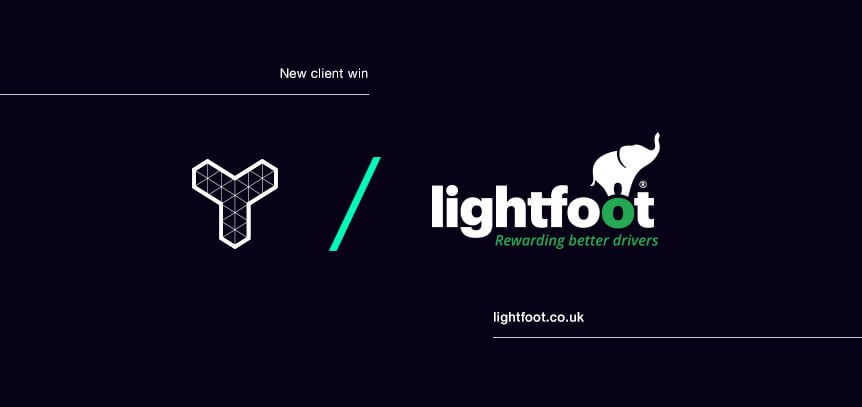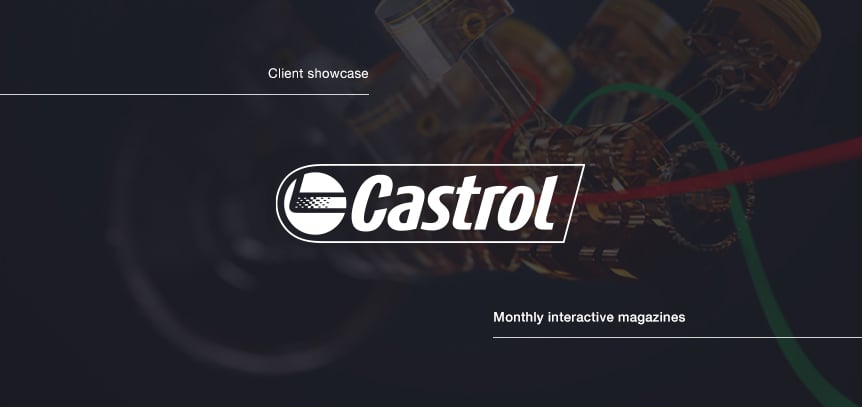
How to maximize your ROI using personalized content for ABM
The key is to work smarter, not harder.
When it comes to account-based marketing (ABM), personalization is not just a nice thing to have – it’s the driving force behind successful campaigns.
To effectively engage key stakeholders in target accounts, you need to address their specific needs, challenges, and goals with relevant content.
However, striking the right balance between personalization and scalability is not always easy.
While personalization is undeniably powerful, it requires a significant investment of time and resources. This is one reason some marketers struggle to achieve the ROI they expect, despite the fact that 76% of marketers report higher returns with ABM compared to other forms of marketing.

So, how do you determine the optimal level of personalization?
In this article, we’ll break down actionable strategies for crafting personalized ABM content that resonates with stakeholders while maximizing your ROI.
Why is personalization so important for ABM?
Personalization is key to delivering targeted, high-impact messaging to key decision-makers.
When you’re doing ABM, you aren’t marketing to an entire industry. You’re targeting specific accounts and specific people within those accounts. These individuals often have diverse priorities based on their roles, making it essential to tailor content accordingly.
However, personalization isn’t just about including a prospect’s name in an email. It’s about understanding what each stakeholder within an account is responsible for, identifying their unique pain points, and developing content that provides solutions to their specific problems.

When done right, personalization can produce positive results. According to McKinsey research personalization can reduce customer acquisition costs by as much as 50%, lift revenues by up to 15%, and improve the efficiency of marketing spend by 30%.
4 steps to personalize your ABM content while increasing your ROI
1. Identifying key stakeholders within target accounts
Before you can create personalized content, you need to know who you’re speaking to – or you risk wasting your time and money.
Every target account is made up of multiple personas, and each persona plays a different role in the buying process. For instance:
- C-suite executives focus on overall business strategy and ROI.
- IT managers care about technical features, integration, and scalability.
- Finance teams are concerned with cost-effectiveness and potential savings.
To ensure that your message resonates with each stakeholder, you must first map out the entire buying committee. Here’s how to identify the right personas:
- CRM and marketing automation tools: Use tools like Salesforce or HubSpot to gather data on key contacts, track interactions, and segment accounts based on persona.
- Behavioral data: Leverage intent data, web analytics, and tracking tools to understand how different personas engage with your content.
- LinkedIn research: Use LinkedIn to identify decision-makers and influencers by role, title, and past interactions.
With this information, you’ll better understand each persona, enabling you to tailor your content to their specific needs and concerns.
2. Select which ABM approaches you’ll take
Once you’ve identified the key personas within each account, the next step is to determine how much personalization to apply based on your resources and the account’s potential value.
Think of content personalization as a spectrum. On one end, you have broad messaging that aims to reach a larger audience, while on the other, there’s deep, tailored communication designed for specific individuals within your target accounts.
Choose strategic ABM for your highest-value accounts
In strategic ABM, you invest significant time in researching each account and crafting highly tailored content for individual decision-makers. Each stakeholder’s specific business challenges, goals, and pain points are addressed with bespoke content. This might include:
- Custom reports focused on their industry’s unique challenges
- Personalized proposals or competitor battlecards
- Detailed account dossiers
For instance, if you’re targeting a high-revenue tech company, your content could include case studies that highlight your solution’s ROI and integration capabilities, tailored to the concerns of both C-suite and IT teams.
Choose ABM lite for mid-tier accounts
In ABM Lite, you extend the principles of one-to-one ABM to a group of accounts with similar characteristics. Personalization is less granular but still relevant.
To streamline the process, use the 10-80-10 rule:
- 10% personalized introduction
- 80% templated content relevant to the industry or group
- 10% personalized call to action
For example, if you’re targeting fintech companies, customize your introduction to address their industry’s regulatory challenges while using standardized messaging for your solution’s core benefits. Tailor the call-to-action to the specific role within the account.
Choose programmatic ABM for lower-priority accounts
In programmatic ABM, content personalization is light and often automated.
Target thousands of accounts with industry-specific messaging and persona-based content while leveraging automation tools. Intent data can help you ensure relevance by identifying which accounts are in the market for your solution.
For example, if a group of recycling companies shows interest in cloud technology, deliver content that speaks to scalability and operational efficiency. Though the content won’t be as customized, it’s still tailored enough to engage decision-makers at scale.
3. Develop content strategies for account personas
Once you’ve identified key personas within your target accounts, the next step is crafting content strategies that speak directly to the needs of each role. The goal is to align your messaging with each persona’s unique pain points, challenges, and goals.
Start by creating a messaging matrix. This should include:
- Pain points: What keeps them up at night?
- Challenges: What hurdles are they trying to overcome?
- Goals: What does success look like for them?
If you’re targeting C-suite executives, you may want to provide high-level whitepapers or industry trend reports that demonstrate how your solution supports strategic business objectives.
However, if you aim for procurement and finance teams, consider crafting content that emphasizes potential savings, such as ROI calculators or total cost of ownership (TCO) comparisons.
Be sure to analyze your intent data to understand where these personas are in their buyer’s journey and which channels they’re most active in. This will help you deliver the right content in the right place.
4. Repurpose existing content
There’s a strong chance you’ll need to produce new content for your ABM campaign, but that doesn’t mean you can’t leverage what you already have.
Repurposing existing content is one of the most effective and efficient ways to boost your ROI. By tweaking and adapting your current assets, you can save time and resources while still delivering highly personalized and relevant content to your target accounts.
This approach reduces costs and maximizes the value of your content, allowing you to engage more stakeholders without starting from scratch.
Here are a few ways you can do this:
- Case studies: Modify case studies to highlight aspects most relevant to specific personas, such as ROI for executives or integration success for IT teams.
- Blog posts and whitepapers: Reframe messaging to focus on different priorities, like strategic insights for executives or technical innovations for IT.
- Dynamic content: Use marketing automation tools to deliver dynamic content on your website or emails, adjusting the messaging based on persona or account behavior in real time.
5. Measure, test, and optimize
Personalization in ABM is only effective if it drives results.
Track these key metrics to measure success:
- Engagement rates: Are different personas engaging with your content? Look at open rates, click-throughs, and downloads.
- Multi-stakeholder engagement: How many stakeholders from the same account are engaging? Broader engagement across roles signals increased interest.
- Sales conversions: Ultimately, the effectiveness of personalized content should be reflected in deal velocity and conversions.
Beyond tracking engagement, analyze how each persona interacts with your content. Leverage intent data, past behavior, and feedback to refine messaging and optimize delivery.
Also, conduct A/B testing to determine which messaging, content formats, or channels resonate best with each persona or account type.
By continually iterating and optimizing your content strategy, you’ll enhance personalization and increase ROI by engaging stakeholders at every stage of their buying journey.
Final thoughts
To ensure maximum ROI when creating personalized content for your ABM campaigns, you must prioritize working smarter, not harder.
By deeply understanding your target stakeholders, crafting tailored content strategies, and efficiently repurposing existing assets, you can build a highly effective personalized approach that not only captures the attention of key decision-makers but also boosts your bottom line.
That said – beyond content personalization, there are other impactful improvements you can make to your ABM campaigns that can help unlock additional sales opportunities and drive even greater results.
To learn more, grab a free copy of our ABM playbook.
Read the latest positioning trends and insights.
Tap into our brand and product positioning, storytelling, and creative expertise to inspire your next strategic move.


